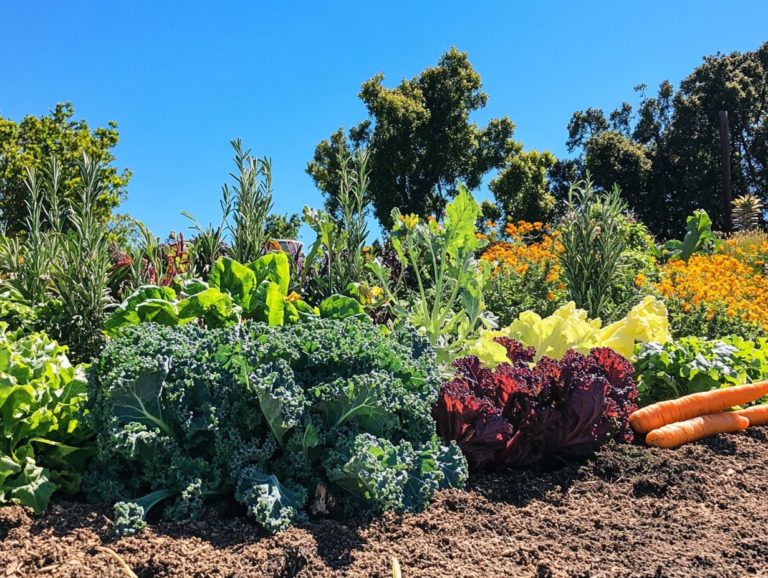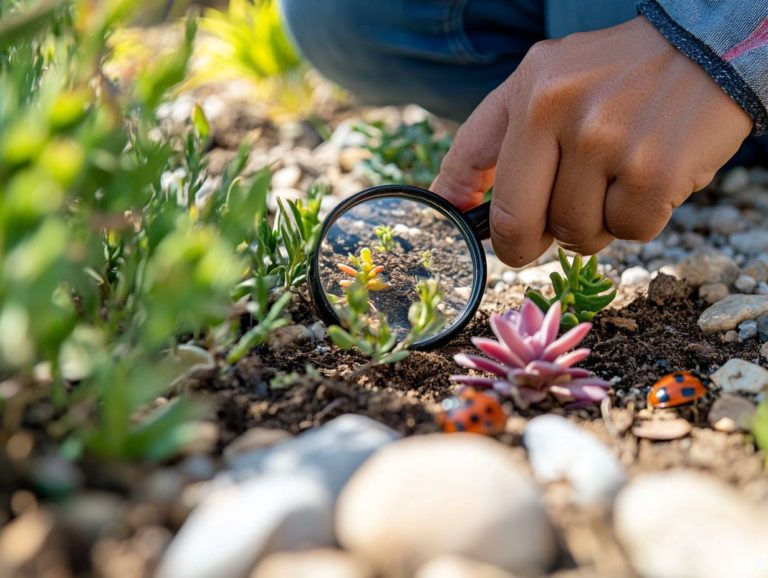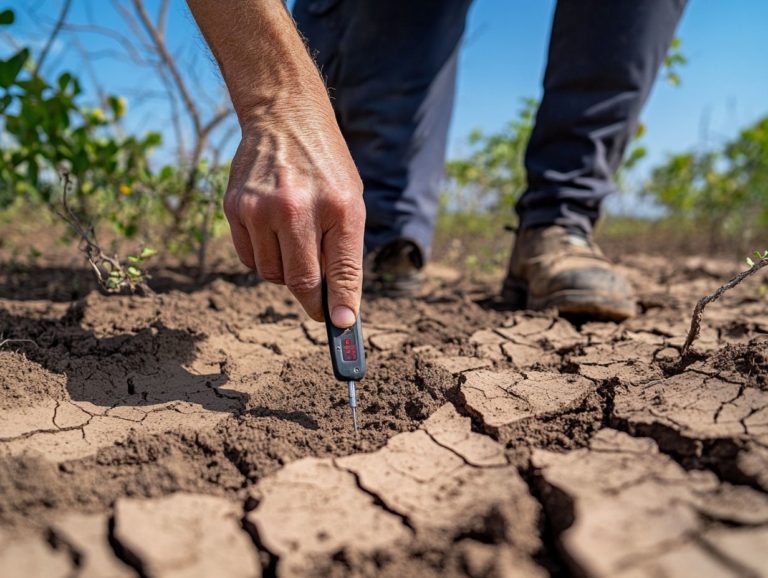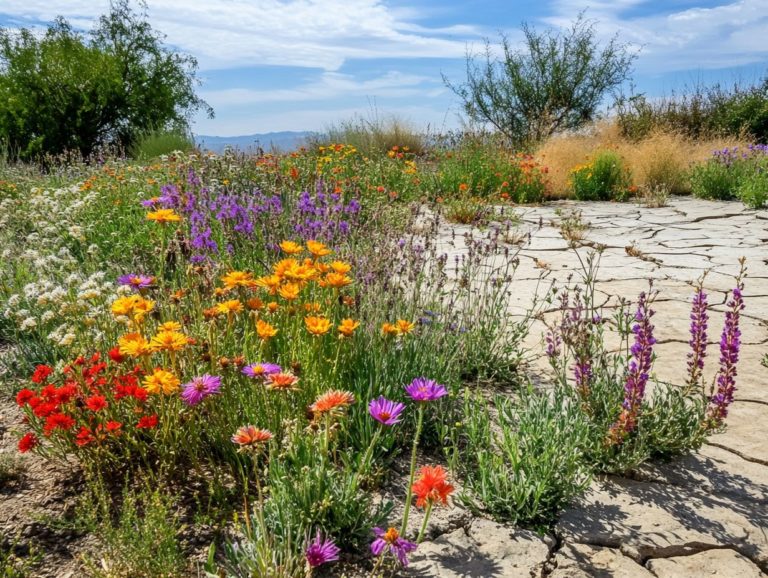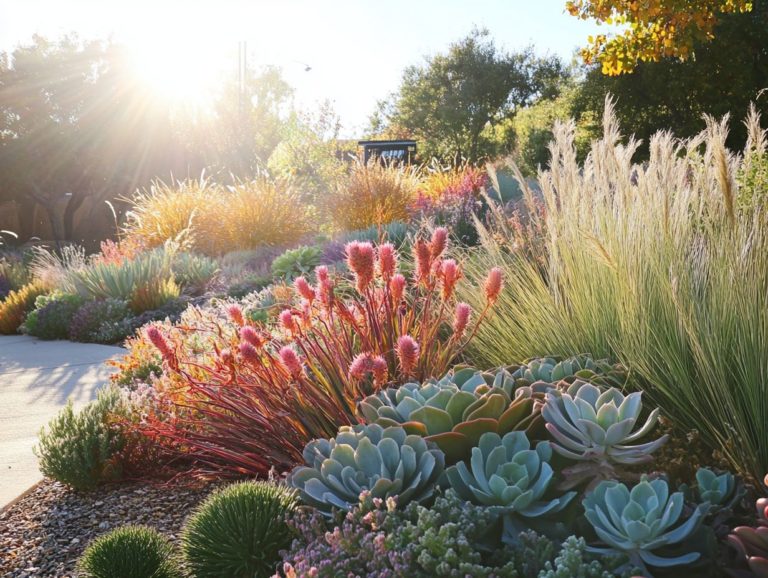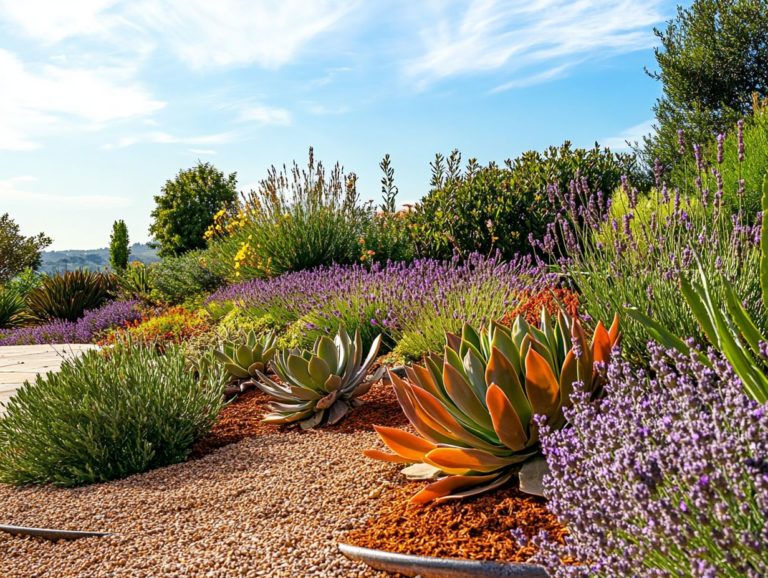What Are the Signs of Underwatering Drought Plants?
Plants require the perfect balance of water to truly thrive. Many plant owners find themselves grappling with underwatering, leading to various challenges for their green companions.
Let s dive deep into underwatering and uncover how to save your plants! This article will help you recognize the visual cues and physical signs that indicate your plants need hydration.
It also offers practical strategies for reviving thirsty plants and preventing this common issue from recurring. Prepare to nurture your plants back to health and ensure they continue to flourish!
Contents
- Key Takeaways:
- Understanding Underwatering in Plants
- Signs of Underwatering in Plants
- How to Revive Underwatered Plants
- Preventing Underwatering in Plants
- Frequently Asked Questions
- What are the signs of underwatering drought-stressed plants?
- Why do plants wilt when they are underwatered?
- How can I tell if my plant has dry or brittle stems?
- What is the best way to revive a drought-stressed plant?
- Will underwatering drought-stressed plants cause long-term damage?
- How often should I water my plants to prevent underwatering?
Key Takeaways:
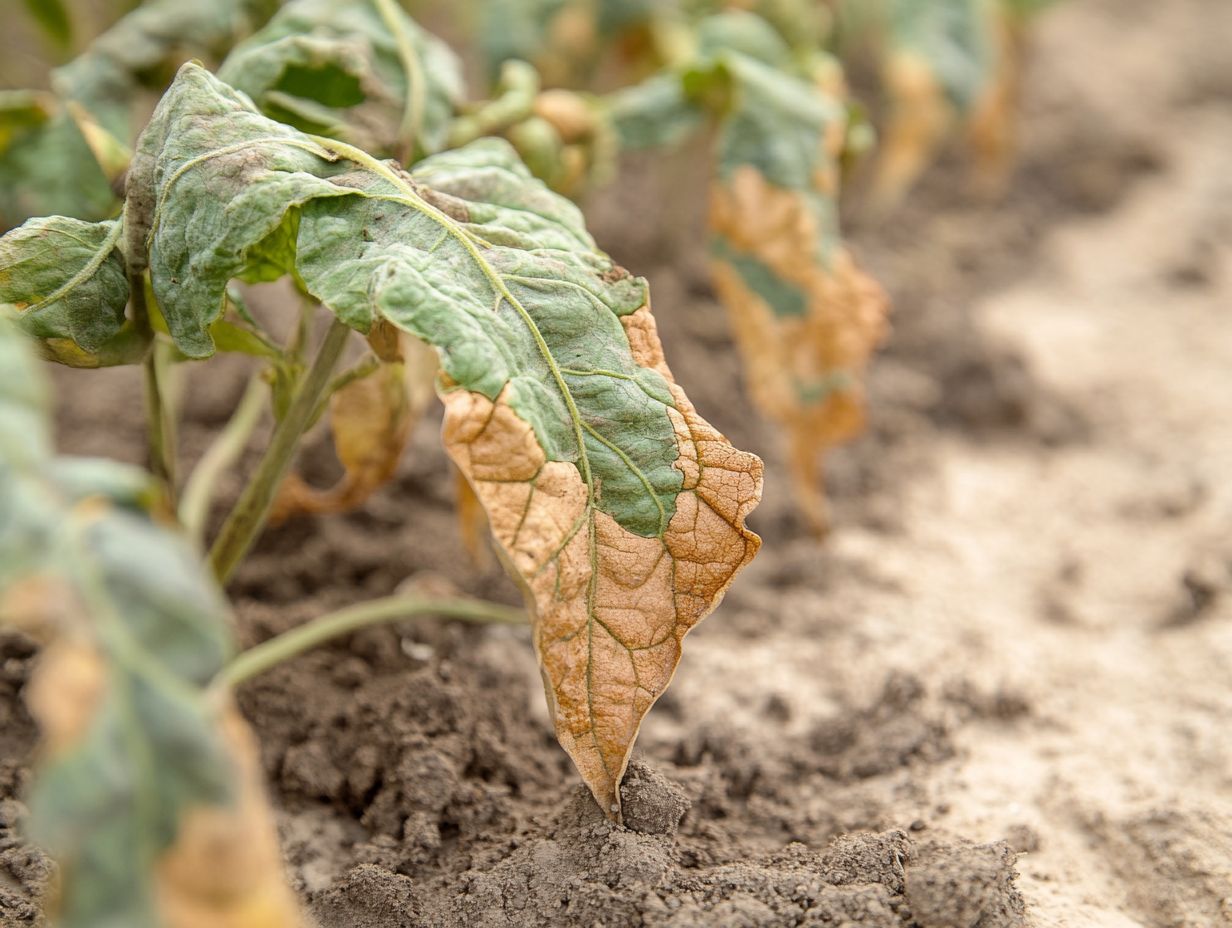
- Look for visual cues like wilting leaves and stunted growth as signs of underwatering in plants.
- Check for physical indicators, such as drooping stems and dry, crumbly soil, to determine if your plants are being underwatered.
- Revive underwatered plants by adjusting your watering techniques and considering alternative methods such as misting or bottom watering.
Understanding Underwatering in Plants
Understanding underwatering in plants is essential for preserving their health and vitality. When plants don t receive enough water, they can experience a range of issues, including drought stress, yellowing leaves, and the dreaded crispy leaf syndrome.
This problem often arises in potted plants or container gardening, where soil moisture levels can change rapidly. By recognizing the signs of underwatering early, you can take proactive measures to save your plants and help them flourish in various soil conditions.
What is Underwatering?
Underwatering occurs when your plants don t get enough water to satisfy their water needs, resulting in water stress and stunted growth.
This deficiency in hydration disrupts crucial metabolic processes vital for survival, including photosynthesis and nutrient absorption. As soil moisture dips below optimal levels, roots struggle to absorb water effectively, leading to telltale signs like wilting, browning leaf edges, and lackluster growth.
Certain species, such as succulents and cacti, may possess some resistance to lower moisture levels, but even they can exhibit distress with extended underwatering. Keep your plants flourishing rather than just hanging on by checking soil moisture regularly.
Implementing proper watering techniques, like deep watering that promotes robust root growth, will help you strike the right balance and ensure your plants thrive in their environment.
Signs of Underwatering in Plants
Recognizing the signs of underwatering in your plants is crucial for timely intervention, as neglecting this can lead to dire consequences like root rot or even the untimely demise of your beloved greenery.
Look out for common visual cues such as yellowing leaves, crispy edges, and wilting these are clear signals that your plant is having a tough time retaining moisture.
Check the soil. If it s dry, coupled with leaf drop, it indicates that the root systems may be compromised, ultimately impacting the overall health and flowering potential of your plants.
Visual Cues and Changes in Growth
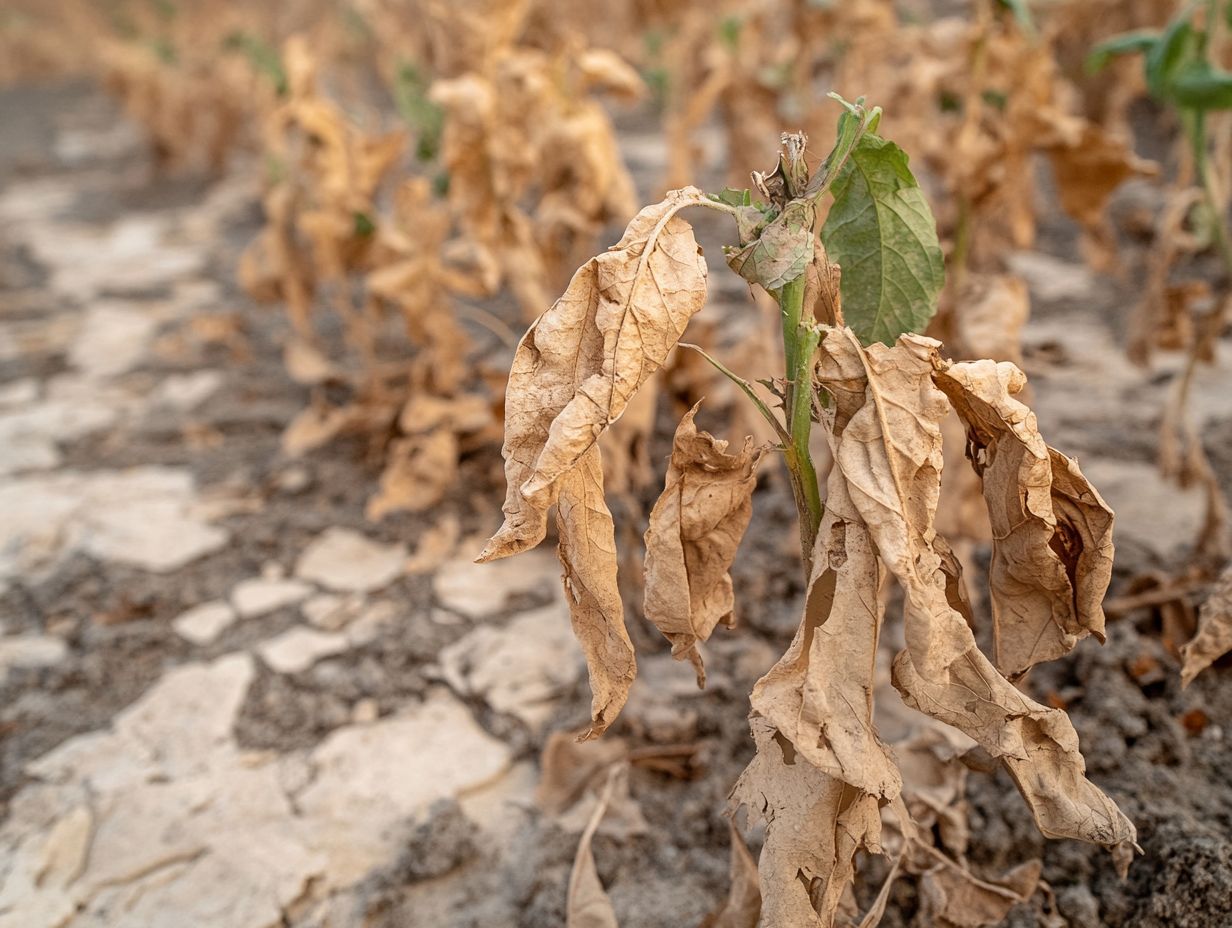
Visual cues are often the first indicators that your plant is suffering from underwatering. Symptoms like yellowing leaves, crispy edges, and wilted foliage signal distress and call for your attention.
These signs suggest that the roots are not receiving the moisture they need, compromising nutrient uptake and overall vitality. For instance, when you notice leaves turning yellow, it often points to chlorosis (yellowing of leaves due to nutrient deficiency), which results from insufficient water leading to nutrient deficiencies.
Those crispy edges aren t just a cosmetic issue; they indicate cell dehydration, where the plant’s tissues lose their rigidity. Underwatering can stunt flower bud development, resulting in fewer blooms and diminishing the aesthetic appeal you desire.
If your plant endures these conditions for too long, it may lead to stunted growth. That s why it s crucial for you to stay vigilant about your watering routines to ensure optimal health and flourishing flower production.
Physical Indicators
Physical indicators of underwatering can show themselves in several ways, including dry soil, leaf drop, and brittle roots. Each of these can seriously compromise a plant s root system and overall health.
Act quickly! To see if your plant needs water, gently probe the soil about an inch deep. If it crumbles and feels dry, it s time to water immediately.
Check the texture and color of the roots. Healthy roots usually have a firm, white appearance, while dehydrated ones may look discolored and fragile.
Timely intervention is essential. Rehydrating your plant promptly not only helps restore its vigor but also promotes a healthy root system, setting the stage for long-term thriving.
How to Revive Underwatered Plants
Reviving underwatered plants requires a thoughtful blend of effective watering techniques and understanding their unique needs to help them get better.
Start by evaluating the soil moisture levels. Then, implement a consistent watering strategy that meets the specific needs of each plant. Methods like deep watering and fine-tuning your irrigation schedule can significantly improve moisture retention in the soil.
Proper Watering Techniques
Proper watering techniques are crucial for bringing underwatered plants back to life. Methods like deep watering and establishing a consistent watering routine can greatly enhance soil moisture retention.
When you practice deep watering, you encourage the roots to reach deeper into the soil, allowing plants to access moisture more effectively. Create a tailored irrigation schedule that adapts to factors such as the season and the specific needs of each plant.
Checking soil moisture is simple; stick your finger into the soil. If it feels dry up to your first knuckle, it s time to give them a drink. Remember, different species have unique requirements. Some thrive with frequent light watering, while others do better with less frequent but deeper saturations. By adjusting your strategies accordingly, you ll ensure your plants are healthier and more resilient.
Other Ways to Revive Plants
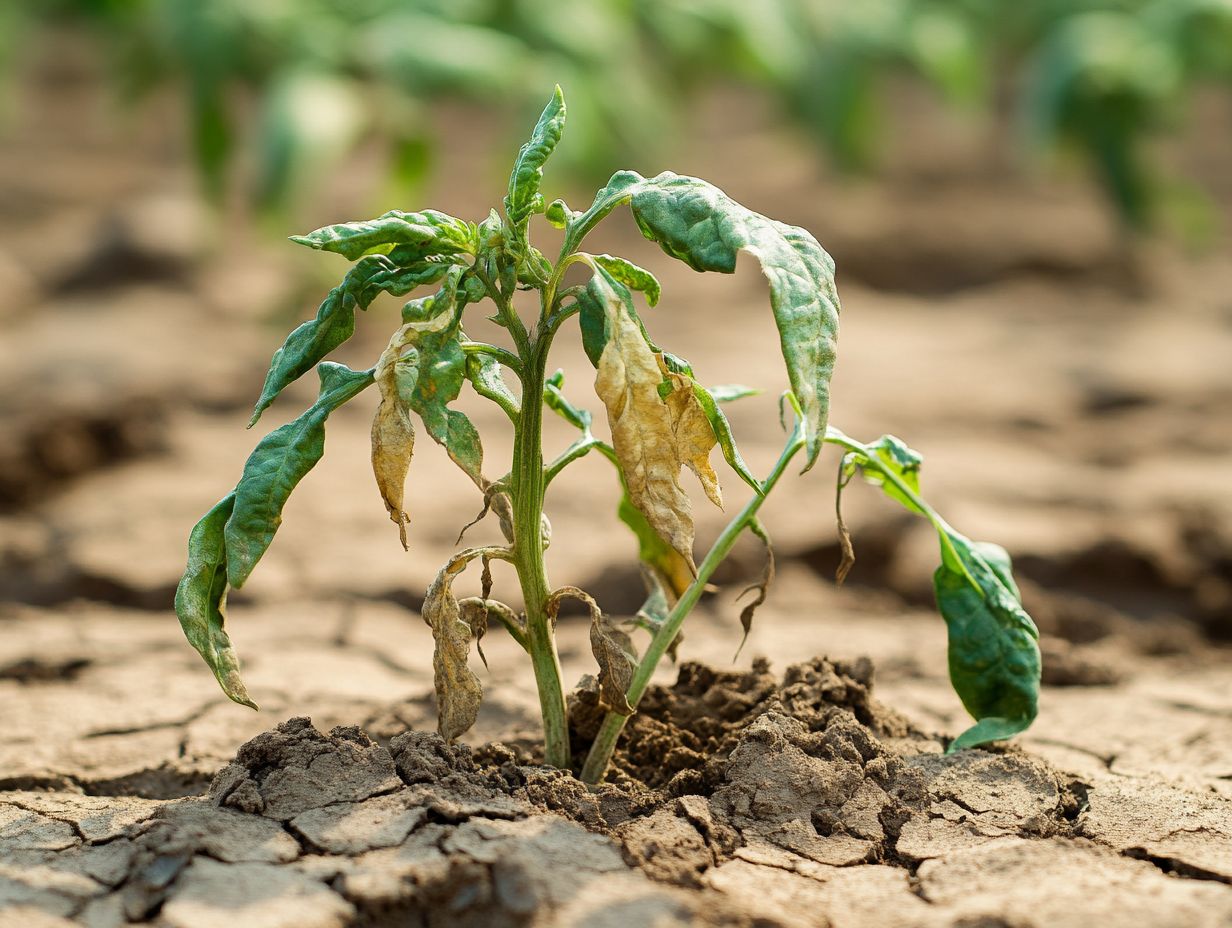
Besides mastering proper watering techniques, you can explore other exciting methods to revive your underwatered plants. Consider adding soil amendments, introducing organic matter, and using mulching techniques to enhance their health.
These strategies will bring your plants back to life by restoring moisture levels and improving overall soil quality, creating a thriving environment. For instance, incorporating compost or well-rotted manure enriches the soil with essential nutrients and boosts its moisture retention capabilities.
Mulching acts as a protective barrier, reducing evaporation and regulating soil temperature. By regularly refreshing the mulch layer, you provide a consistent source of organic material that nourishes the soil and helps your plants withstand drought conditions.
Preventing Underwatering in Plants
Preventing underwatering in your plants requires a proactive approach and thoughtful strategies to maintain optimal water levels throughout the growing season. Implement a well-structured irrigation schedule and adjust your gardening practices according to seasonal watering needs to significantly reduce the risk of underwatering.
Conduct regular soil tests to gain valuable insights into your soil s moisture retention abilities. This will help you make targeted interventions that support the health and vitality of your plants.
Tips for Maintaining Proper Water Levels
Maintaining proper water levels is essential for the health of your plants, particularly in potted arrangements where soil moisture can fluctuate rapidly.
To achieve this, consider implementing specific irrigation strategies that cater to the diverse moisture needs of different plant species. For example, employing a drip irrigation system can deliver a consistent water supply, minimizing evaporation and ensuring that the roots receive adequate moisture.
Keeping a moisture meter nearby will help you determine when it s time to water, offering valuable insight into the soil’s conditions. Tailoring your irrigation schedule to adapt to local climate conditions such as adjusting the frequency during hot or dry spells will promote healthier growth and enhance the longevity of your potted collection.
Watch our video for practical tips on maintaining water levels in your plants.
Frequently Asked Questions
What are the signs of underwatering drought-stressed plants?
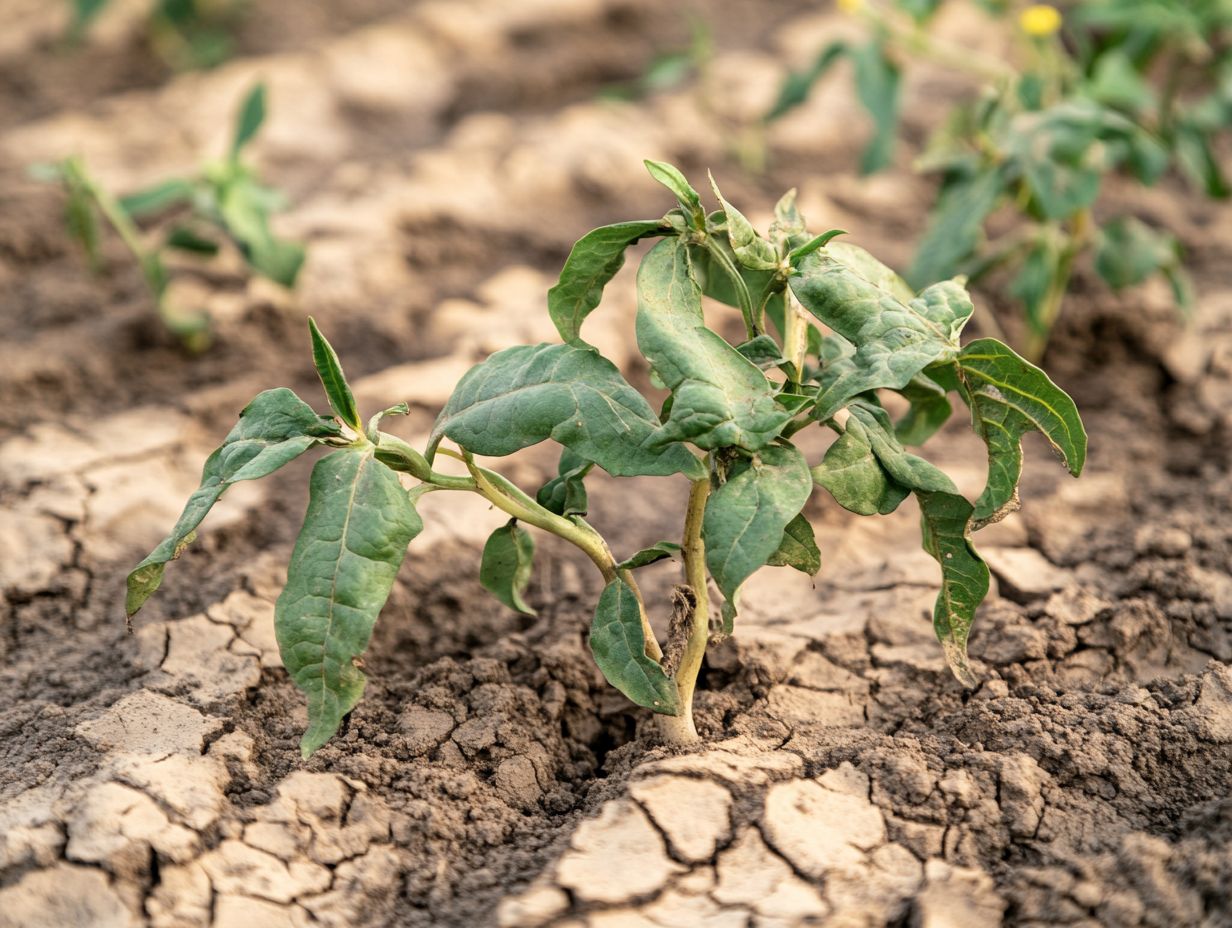
The signs of underwatering drought-stressed plants include wilting leaves, dry or brittle stems, drooping or yellowing foliage, and slow growth.
Why do plants wilt when they are underwatered?
Plants wilt when they lack water because they can’t stay firm and upright in their cells. When the cells lack water, the plant’s leaves and stems will droop and wilt.
How can I tell if my plant has dry or brittle stems?
Gently touch the stems of your plant. If they feel dry, stiff, or easily breakable, it’s a sign that the plant is not receiving enough water.
What is the best way to revive a drought-stressed plant?
To bring a drought-stressed plant back to life, start by watering it gently at the base until the soil is evenly moist. Ensure you also provide proper sunlight and temperature conditions for the plant to recover.
Will underwatering drought-stressed plants cause long-term damage?
Yes, neglecting to water can quickly lead to stunted growth and even the loss of your beloved plant if it continues for an extended period. It can cause root damage and may even result in plant death in severe cases.
How often should I water my plants to prevent underwatering?
The frequency of watering depends on various factors such as the type of plant, soil type, and weather conditions. Generally, it is recommended to water plants when the top inch of soil is dry to the touch.

